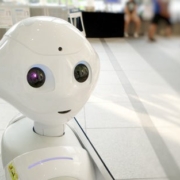 One of the main selling points of open plan offices is that they are good for collaboration. Their ability to support ease of communication among employees is supposed to encourage teams to work effectively together. This is then supposed to offset their damage to individual work that requires high levels of concentration.
One of the main selling points of open plan offices is that they are good for collaboration. Their ability to support ease of communication among employees is supposed to encourage teams to work effectively together. This is then supposed to offset their damage to individual work that requires high levels of concentration.
Except the evidence is mounting that they aren’t even that good for supporting collaboration. Earlier this year a study from Karlstad University, Sweden found that open-plan office spaces not only harm collaboration, but also reduce employee happiness.











 Computers today can not only automatically classify photos, but they can also describe the various elements in pictures and write short sentences describing each segment with proper English grammar. This is done by the Deep Learning Network (CNN), which actually learns patterns that naturally occur in photos.
Computers today can not only automatically classify photos, but they can also describe the various elements in pictures and write short sentences describing each segment with proper English grammar. This is done by the Deep Learning Network (CNN), which actually learns patterns that naturally occur in photos. 